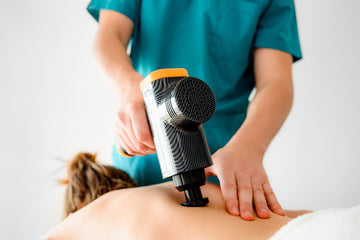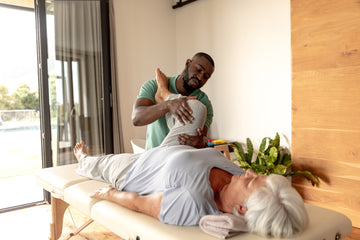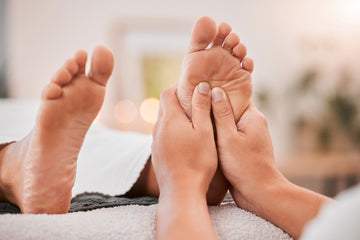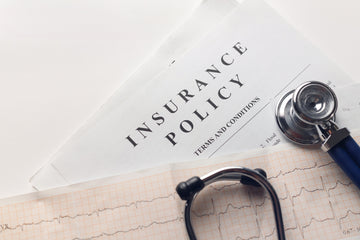Stress, whether environmental or psychological, has a unique impact on our bodies. Our stress hormones activate our parasympathetic nervous system, a network of nerves relaxing our bodies after periods of stress, counteracting our “fight or flight” response.
Enter: The vagus nerve. The main nerve of the parasympathetic nervous system is the vagus nerve, and while you may not have heard of vagus nerve stimulation, it’s an effective way to produce relaxation and relief from the physical signs of stress.
In this article, we will discuss what the vagus nerve is, how to determine if it functions correctly, and how to stimulate it on your own to find relief.
What is the Vagus Nerve?
The vagus nerve is the longest cranial nerve in the body and consists of two branches – the left and right vagus nerves. Its name comes from the Latin word for “wandering,” which is fitting because the vagus nerve wanders through various organs, including the heart, lungs, digestive tract, and vocal cords.
The vagus nerve controls involuntary bodily functions, like heart rate, digestion, respiratory rate, and more. When the vagus nerve isn’t working correctly, it can lead to:
- Dizziness
- Abdominal pain
- Difficulty swallowing
- Loss of appetite
- Changes in blood pressure
- Migraines
- Epilepsy
- Anxiety
- Depression
You can stimulate vagus nerve response on your own using various techniques designed to reactivate this cranial nerve’s functions. When activated, the body’s functions work in harmony with one another – bringing relief from stress, anxiety, and a variety of ailments.
The Benefits of Natural Vagus Nerve Stimulation
When you naturally stimulate the vagus nerve, it provides a range of potential health benefits. From stress reduction to pain management, there are several benefits when you stimulate vagus nerve response, including:
- Stress reduction: Vagus nerve stimulation promotes relaxation by activating the parasympathetic nervous system, which counteracts the "fight or flight" response and reduces stress.
- Improved digestion: The vagus nerve plays a significant role in digestive processes, regulating the movement of food through the gastrointestinal tract. Stimulating the vagus nerve can alleviate digestive issues and enhance nutrient absorption.
- Heart health: Vagus nerve stimulation can influence heart rate and blood pressure, contributing to overall cardiovascular health. It may help regulate irregular heart rhythms and reduce the risk of heart disease.
- Enhanced mood: The vagus nerve is involved in regulating mood and emotions. Stimulating it can lead to the release of neurotransmitters like serotonin and dopamine, which are associated with improved mood and reduced symptoms of depression.
- Pain management: When you stimulate vagus nerve response, studies have shown some promising results in chronic pain management, particularly for conditions like migraines and chronic pain disorders.
How to Stimulate the Vagus Nerve at Home
Natural vagus nerve stimulation, not to be confused with the implanted vagus nerve stimulation (VNS) unit, can be done at home without needing specialized equipment. There are different ways to achieve relaxation and to actively stimulate vagus nerve response.
So, how do you stimulate the vagus nerve at home?
1. Breathing Exercises
Controlled diaphragmatic breathing is a powerful tool to stimulate vagus nerve response and reduce stress. This technique involves taking slow, deep breaths that engage the diaphragm, which sends signals to the brain to activate the parasympathetic nervous system.
Regular deep breathing exercises can become a simple yet effective daily practice for managing stress and promoting vagus nerve activity. It can be done anywhere, whether at your desk, in your car, or a quiet space at home. As you make deep breathing a habit, you'll likely notice reduced stress levels, improved mood, and a greater sense of calm.
2. Cold Exposure
Brief exposure to cold temperatures, such as cold showers or ice baths, can activate the vagus nerve's activity. Cold exposure acts as a stressor, prompting the body to release stress hormones like adrenaline and cortisol. The initial stress response triggered by the shock of cold is followed by a relaxation effect as the parasympathetic nervous system kicks in.
As your body adapts to the cold, the vagus nerve responds by activating the parasympathetic nervous system. This results in a deep sense of relaxation, improved circulation, and an invigorating feeling.
3. Tapping Techniques
Emotional Freedom Techniques (EFT), commonly known as tapping, involve gently tapping specific acupressure points on the body while focusing on emotions or issues that cause stress or discomfort. This practice combines aspects of cognitive therapy, exposure therapy, and acupressure.
Tapping is believed to work by releasing the flow of energy through the body, which may present as feeling disconnected or increased anxiety. As you tap on these energy points, you indirectly stimulate the vagus nerve, promoting relaxation and emotional balance.
4. Massage
Massage to stimulate the vagus nerve doesn’t mean directly massaging the nerve itself. Instead, massaging areas close to the vagus nerve can help activate it - promoting relaxation and lowering stress levels. Regular soft tissue massage and carotid sinus massage (best done by a professional) are two techniques that can enhance vagal tone, leading to improved physical health, mental health, cardiovascular functioning, and more.
Massage chairs are also a key wellness tool, offering a wide variety of massage techniques that extend beyond simple muscle relaxation. Massage chairs with advanced capabilities, including 3D massage chairs, have the potential to indirectly stimulate the vagus nerve. 3D massage chairs have features that include the ability to provide a deeper massage experience with a variety of massage techniques and are built as S-track and L-track chairs for better coverage. These offer a holistic approach to stress reduction and overall well-being.
5. Probiotics and Diet
Consuming probiotics, which are beneficial bacteria that support gut health, can positively impact the gut-brain relationship and, in turn, vagus nerve function. Probiotics help maintain a healthy balance of gut bacteria, which can influence mood, stress response, and emotional regulation due to its relationship with the vagus nerve.
Maintaining a balanced diet rich in nutrients supports overall vagus nerve health. A diet that includes anti-inflammatory foods, omega-3 fatty acids, and antioxidants can help reduce inflammation and support optimal vagus nerve function.
6. Singing and Chanting
Singing and chanting, often associated with music and spiritual practices, are holistic ways to stimulate vagus nerve response. These activities not only enhance your overall mood but also contribute to overall well-being by promoting vagus nerve activation through controlled breathing and vocal cord engagement.
Promoting Relaxation with Vagus Nerve Stimulation
The vagus nerve greatly influences many of the body’s functions. As the longest cranial nerve, it assists in many systems throughout the body. If you stimulate vagus nerve response, you may be able to achieve a heightened state of relaxation.
Learning how to stimulate the vagus nerve can be as easy as practicing meditation or purchasing a massage chair for your home. While incorporating the practices above into your daily routine can promote relaxation, reduce stress, and contribute to overall well-being, it’s important to experiment with different methods to find out what works best for you.
Disclaimer: This content is not medical advice. Please consult with your health care professional when considering implementing changes to your health or workout routines to ensure it’s compatible with your needs.





